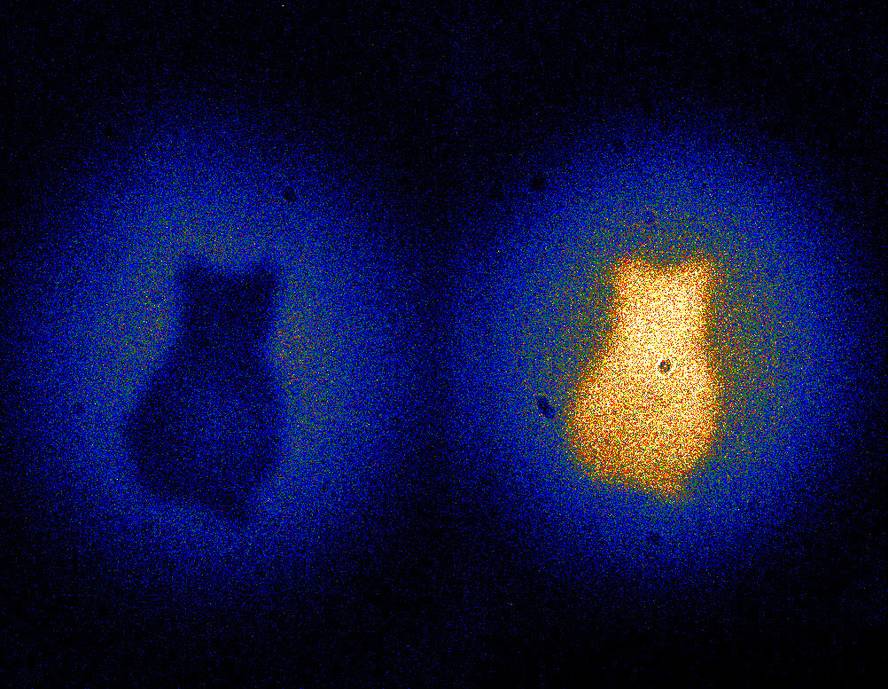Photons that have seen the cat without seeing the cat

A cat, the best-known icon of quantum mechanics, has been used by researchers from the Institute of Optics and Quantum Information of the Austrian Academy of Sciences to present an imaging technique. The image of this cat has not been generated by detecting photons that have interacted with the cat. On the contrary, the photons that have created this image do not interact with the cat. In fact, physicists have used a well-known property of quantum mechanics to create the cat image: quantum entanglement.
Quantum locked particles are not independent of each other, and physicists are learning how to exploit this characteristic, for example, to transmit information, acting only on one of the locked particles. Austrian researchers have used intertwined photons to create cat images.
To carry out the experiment they have created quantically complicated photon pairs. The only difference between the photons that form each pair is the wavelength, being identical in the rest. During the experiment, one of the photons has been sent against the object and the other to the detector. Since shipments against the object are complicated by those sent to the detector, physicists have been able to create the image of the illuminated object, in this case the cat, although the detected photons have not interacted with it.
What was done may seem like curiosity, but according to researchers it is a way to experiment with long waves that do not have adequate detectors. This has been done by the experiments presented in the journal Nature and have created images of invisible or opaque objects for detected photons.





